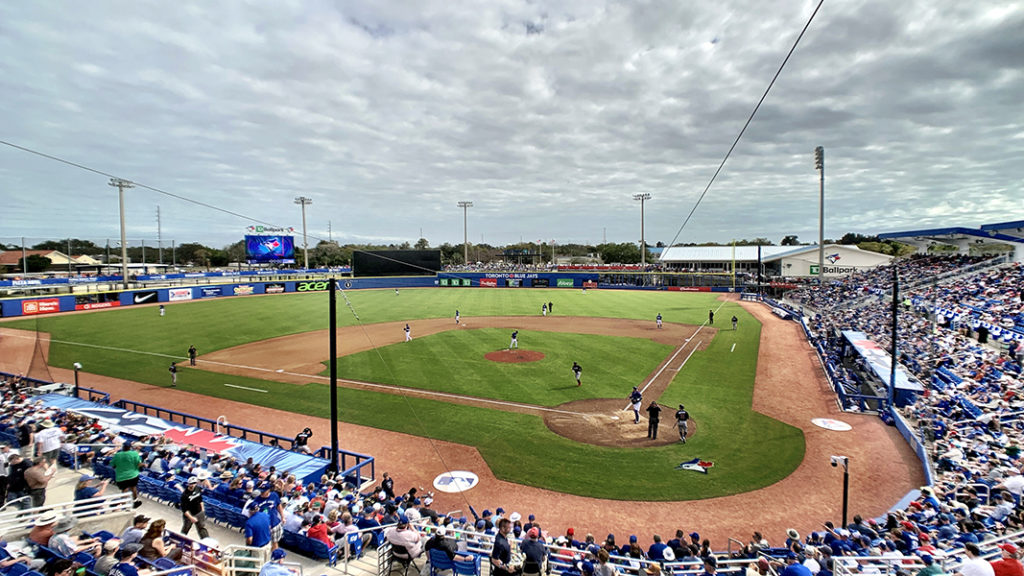
Another sign that MLB is serious about moving ahead with spring training and the regular season: Commissioner Rob Manfred issued health and safety guidelines for fans attending spring-training and regular-season games.
In a memo issued to teams, Manfred laid out the minimum requirements from his office for hosting fans, provided local health guidelines allow it.
The health and safety guidelines will not be surprising to many observers of how outdoor professional sports have been treated for months. For instance, fans will be seated in pods six feet apart, and ballpark entrances will be opened on a scheduled basis. Masks will be required. In spring training, season-ticket holders will be given first access to tickets; as of now only a few teams are selling and processing season tickets, and no ballpark has put single-game tickets on sale.
Fans will not be allowed to view workouts, unless they are held in the ballpark with fans limited to their assigned seats, or seek autographs. And in fact there will be a mandated six-feet buffer between players and fans (save the area around the dugouts, where there will be a 12-foot buffer between fans and players). That will take out the first three rows of the grandstand out of play. These are minimum standards; local authorities may mandate more protective measures. More on the spring-training situation at our sister site, Spring Training Online.
Much of what Manfred outlined to teams was already set forth months ago by teams like the New York Yankees, who worked with local officials to outline what would happen in spring training in terms of social distancing, daily operations and the installation of hands-free technology throughout the facility, ranging from ticket booths to restrooms. Here’s a long look at what the Yankees outlined as operating procedures way back in September.
One thing that won’t happen, despite some chatter to the contrary, is that MLB will not mandate proof of vaccination or a negative COVID-19 test. And, of course, the best-laid plans may be altered based on circumstances:
“The Office of the Commissioner understands the need for clubs to plan for next season,’’ wrote Manfred, “but MLB’s policies ultimately will depend on the public health situation in the United States, which is difficult to predict this far in advance of the season. In particular, the current uncertainty surrounding COVID-19 vaccine production and distribution rates is preventing our experts from making predictions about the spring and summer with specificity. As such, MLB’s guidance on fan attendance may change in the coming weeks as circumstances change, and may also be modified later as the season progresses and conditions improve.’’
Last year was an anomaly in terms of shortening the season, with Manfred and players agreeing on truncated, fanless play only after months of negotiations. This year the players’ union is adamant about playing a full season–or at least paid for one–and Manfred doesn’t have the unilateral authority to shorten the season, despite throwing up some trial balloons regarding a 150-game campaign, with the season launch pushed back to May. Players are scheduled to report to training camps in a month (though voluntary workouts have begun), with spring training set to begin late February. These guidelines do not yet apply to Minor League Baseball, though teams have been warned that fan-safety guidelines will be issued down the road.
RELATED STORIES: MLB: Expect spring training 2021 to begin on time; MLB, players spar over 2021 season
